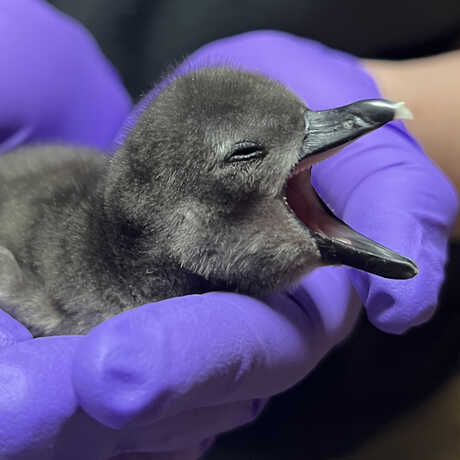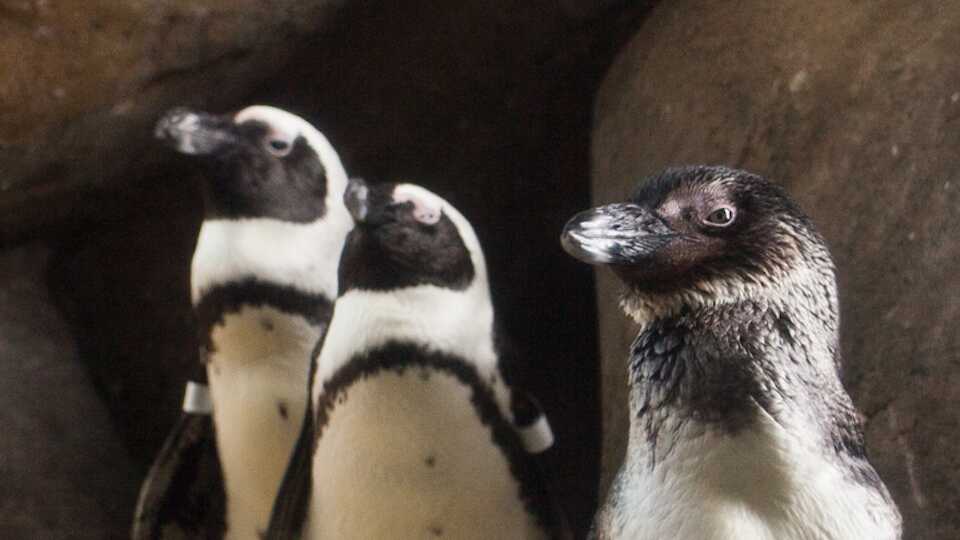Between November 2022 and January 2024, our African penguin colony expanded by an unprecedented 10 chicks. View our press release to learn more!


There is never a dull moment in the penguin exhibit. Watch for these commonly seen behaviors and processes that offer a window into penguin biology and their complex social interactions.
In order to stay warm, a penguin must constantly work to keep their feathers clean, well-oiled, and waterproof. This behavior is called preening, and can be done while swimming or on land. Penguins have an oil gland at the base of their tail, and nip at it to transfer the oil to their beak, so they can apply it to the rest of their body.
These behaviors begin during courtship when a new couple is getting to know one another. Throughout their relationships, which can last a lifetime, partners will continue to bow and shake their heads at one another to reinforce their bond.
When moving through the territory of other birds, African Penguins adopt a slender posture in which the body is stretched vertically, and the neck is elongated and the head held high. By moving in this manner, the penguin signals to other birds that it is not a threat and need not be pecked. You can watch our penguins exhibiting this behavior when walking on land and approaching a nest box.
The most common and loudest behavior of the African Penguin is the ecstatic display, seen and heard every day in the exhibit. Standing with its feet apart, a penguin slowly raises its head, pointing the beak upwards. Wings lifted outward, the chest heaves with an inhale of air, followed by a loud braying sound. This display is most frequently seen and heard when a penguin has wandered into another’s territory. It communicates territory ownership, identifies the penguin (each bird’s bray is unique) and often draws the mate back to their territory.
Penguin feathers are highly adapted to provide insulation, but they wear down over time and need to be replaced. About once a year, each bird goes through a molting process which takes weeks to complete. New feathers are manufactured beneath the skin and essentially push the old feathers out as they grow in, causing the birds to appear quite disheveled. In the weeks leading up to molting, a penguin will eat more than usual to bulk up for an extended period of time out of the water. In our exhibit, biologists feed molting birds on land, but in the wild, this would be a time period without food.
Between November 2022 and January 2024, our African penguin colony expanded by an unprecedented 10 chicks. View our press release to learn more!

Download our Pocket Penguins app for iPhone, Android, and AppleTV to stream the antics of our African penguin colony 24/7.

Watch our African penguins waddle in HD! Tune in to feeding time at 10:30 am and 3 pm daily for extra cuteness.